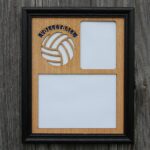I. Introduction to Molding and Ceramics in Vintage Repairs
II. Benefits of Using Molding and Ceramics for Repairs
III. Step-by-Step Guide to Using Molding and Ceramics in Vintage Repairs
IV. Tips for Successfully Implementing Molding and Ceramics in Vintage Repairs
Introduction to Molding and Ceramics in Vintage Repairs
Hey there, vintage enthusiasts! If you’re someone who loves restoring old treasures and giving them a new lease on life, then you’ve come to the right place. Today, we’re going to delve into the world of molding and ceramics in vintage repairs, and how these techniques can help you bring back the beauty of your beloved pieces.
When it comes to restoring vintage items, there are a plethora of techniques and materials that can be used. However, molding and ceramics are two of the most versatile and effective methods that can truly elevate your repair game.
Whether you’re looking to fix a chipped teacup, repair a cracked vase, or restore a broken figurine, molding and ceramics can be your best friends in achieving seamless repairs that look like they never happened.
So, sit back, grab a cup of tea, and let’s explore the wonderful world of molding and ceramics in vintage repairs together!
Benefits of Using Molding and Ceramics for Repairs
When it comes to restoring vintage items, using molding and ceramics can be a game-changer. Not only do these materials provide a durable and long-lasting solution, but they also offer a unique touch that can enhance the overall aesthetic of the item. Here are some benefits of using molding and ceramics for vintage repairs:
- Strength and Durability: Molding and ceramics are known for their strength and durability, making them ideal for repairing delicate vintage items. Whether you’re fixing a crack in a ceramic vase or filling in a missing piece on a vintage figurine, using these materials can ensure that your repair will withstand the test of time.
- Customization: One of the great things about molding and ceramics is that they can be easily shaped and molded to fit the specific needs of your repair. This allows you to customize the repair to match the original design of the item, ensuring a seamless and natural-looking finish.
- Cost-Effective: While some vintage items may seem beyond repair, using molding and ceramics can often be a more cost-effective solution than purchasing a new item or seeking professional restoration services. With a little bit of time and effort, you can breathe new life into your vintage treasures without breaking the bank.
- Versatility: Molding and ceramics can be used for a wide range of repairs, from filling in cracks and chips to creating intricate details on damaged items. Whether you’re restoring a piece of pottery or repairing a broken sculpture, these materials offer versatility and flexibility to tackle any repair project.
- Professional Results: When used correctly, molding and ceramics can produce professional-quality results that rival those of expert restorers. With the right techniques and a bit of practice, you can achieve seamless repairs that blend seamlessly with the original design of the item, giving it a new lease on life.
Overall, using molding and ceramics for vintage repairs can be a rewarding and satisfying experience. Not only do these materials offer strength, customization, and cost-effectiveness, but they also provide versatility and professional results that can bring your cherished vintage items back to their former glory. So next time you’re faced with a broken or damaged vintage treasure, consider reaching for molding and ceramics to restore it to its former beauty.
Step-by-Step Guide to Using Molding and Ceramics in Vintage Repairs
So you’ve decided to tackle some vintage repairs using molding and ceramics – that’s fantastic! It’s a great way to restore pieces and give them new life. Here’s a step-by-step guide to help you through the process:
- Clean and Prepare: The first step is to thoroughly clean the item you’ll be repairing. Make sure it’s free of any dust, dirt, or debris. This will ensure that the molding and ceramics adhere properly.
- Create the Mold: If you’re working on a missing piece or need to replicate a part, you’ll need to create a mold. There are various molding materials available, such as silicone or latex. Follow the instructions on the product for the best results.
- Mix and Apply the Ceramics: Once you have your mold ready, it’s time to mix your ceramics. You can choose from different types depending on the project, such as epoxy putty or air-dry clay. Apply the ceramics to the mold and let it dry according to the manufacturer’s instructions.
- Sand and Shape: Once the ceramics have dried, you can sand it down to smooth out any rough edges. Use a fine-grit sandpaper for the best results. You can also shape the ceramics to match the original piece if needed.
- Attach the Repaired Piece: If you’re replacing a missing piece, carefully attach the repaired ceramics to the item using an adhesive suitable for ceramics. Make sure it’s securely in place before moving on to the next step.
- Paint and Finish: To complete the repair, you can paint the ceramics to match the original piece. Use acrylic paints or ceramic glazes for the best results. Once the paint has dried, you can add a protective finish to seal and protect the repair.
- Final Touches: After the repair is complete, take a step back and admire your handiwork. If needed, you can touch up any areas or make additional adjustments to ensure the repair blends seamlessly with the rest of the item.
Repairing vintage items with molding and ceramics can be a rewarding and creative process. Remember to take your time, follow the steps carefully, and don’t be afraid to experiment and make adjustments as needed. With a little patience and practice, you can breathe new life into your vintage pieces and create stunning repairs that will stand the test of time.
IV. Tips for Successfully Implementing Molding and Ceramics in Vintage Repairs
So, you’ve decided to take on the challenge of restoring your vintage pieces using molding and ceramics. Congratulations! This is a fantastic way to breathe new life into your cherished items and preserve their beauty for years to come. To help you navigate this process smoothly, here are some expert tips to ensure successful implementation:
- Choose the Right Materials: When it comes to molding and ceramics, quality matters. Opt for high-quality materials that are specifically designed for restoration projects. This will ensure a durable and long-lasting finish.
- Measure Twice, Cut Once: Before you start the repair process, take accurate measurements of the damaged area. This will help you determine the amount of molding or ceramics needed and avoid any costly mistakes.
- Practice Patience: Rome wasn’t built in a day, and neither is a successful restoration project. Take your time and work meticulously to achieve the best results. Rushing through the process can lead to sloppy workmanship and subpar outcomes.
- Seek Professional Advice: If you’re unsure about any aspect of the restoration process, don’t hesitate to seek advice from a professional. They can provide valuable insights and guidance to help you tackle even the most challenging repairs.
- Test Before Applying: Before applying molding or ceramics to your vintage piece, it’s a good idea to conduct a test run on a small, inconspicuous area. This will allow you to assess the color, texture, and finish to ensure it matches seamlessly with the rest of the item.
- Invest in Proper Tools: Having the right tools for the job can make a world of difference in your restoration project. Invest in high-quality tools such as modeling clay, sculpting tools, and ceramic adhesive to achieve professional results.
- Embrace Creativity: Don’t be afraid to think outside the box and get creative with your restoration project. Experiment with different molding designs, ceramic finishes, and color schemes to add a unique touch to your vintage piece.
- Protect and Preserve: Once you’ve completed the restoration process, don’t forget to protect and preserve your vintage piece. Consider applying a sealant or protective coating to safeguard the repairs and maintain their integrity over time.
By following these tips and tricks, you’ll be well-equipped to successfully implement molding and ceramics in your vintage repairs. Remember, patience, attention to detail, and a touch of creativity are key to achieving stunning results. Happy restoring!










Comments